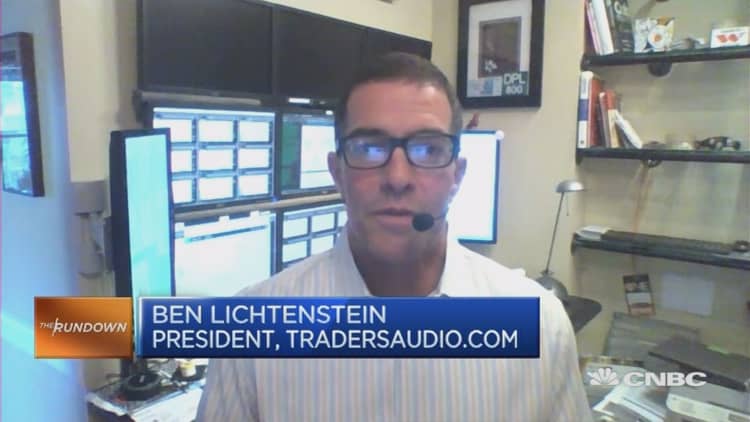
Corporate profits have been stuck in reverse for the last year and a half. They finally look like they're getting back in gear.
companies in aggregate haven't seen year-over-year earnings gains since the first quarter of 2015, and judging by the looks of things on the surface, that profit recession could continue. However, if historical trends hold true in this quarter, corporate America likely will turn a profit.
Earnings season revs up this week, with Alcoa reporting Tuesday morning — what once was the season's unofficial kickoff — and with several large banks on tap Friday.
Current projections are that earnings for the S&P 500 in aggregate will decline 2.1 percent, according to FactSet. That almost never holds true, though. Companies set the bar low heading into the reporting period, and usually about 68 percent end up beating analyst projections. So far in the third-quarter season, 20 of the 25 companies that have reported beat the Street.
If the historical trend holds up, that would take the actual earnings growth to 0.9 percent, according to FactSet calculations. That would mark the first growth quarter since the first quarter of 2015, when earnings went up 0.5 percent. The second quarter of 2016 saw a decline of 3.5 percent.
The market has managed to weather the earnings recession, despite the traditional link between profits and stock prices. During the period, the S&P 500 has gained just shy of 5 percent.
How investors handle a return to profitability, should it pan out, could depend more on the quality of earnings than the absolute value.
"While you had the Fed clearly underpinning the markets, the market was able to move considerably higher despite the earnings recession," said Quincy Krosby, market strategist at Prudential Financial. "But with the Fed inching toward a rate hike in December, for the market to keep moving higher you really do have to have earnings that are commensurate with valuation, and you need to see growth."
Indeed, low rates and nearly $4 trillion in quantitative easing collectively formed a base for the market since the lows of March 2009. While the Fed ended the QE money-printing program in late 2014, it has raised rates only once — a quarter-point move in December 2015 — and has held off on more despite indicating initially that four hikes were on the way this year.
Krosby believes companies will have to show strong forward guidance that will be based more on sales than cost-cutting.
"Earnings do not have to be much stronger, they just have to be less bad," she said. "We need to have more positive guidance. We need to hear from a cross section of sectors that they are getting stronger projections for demand for their products."
Guidance, as also is usually the case, is trending negative this season, with 80 of 114, or 70 percent, of companies that have issued earnings guidance on the negative side. However, even that is an improvement over the usual 74 percent, according to FactSet.
To be sure, there are potential hazards. Goldman Sachs analysts believe this quarter could defy history, expecting that slower economic growth compared with 2015 will tamp down earnings growth. The firm is advising clients to head back to defensive sectors, after cyclical companies outperformed during the previous three months.
Goldman has a pessimistic outlook, with an S&P 500 price target of 2,100 that would entail a 3 percent decline from current levels.


